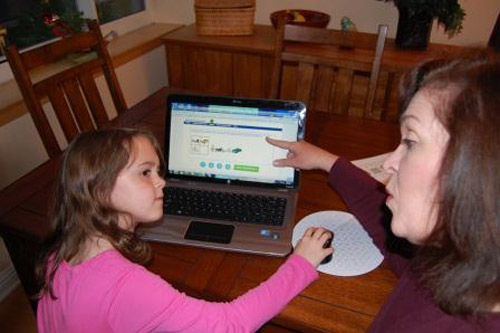
Put down your teddy bear! 標準化されたテストを受ける時が来ました.
トップへの競争が未就学児を早すぎる学業環境に追いやる恐れがあることは重要ですか?
マイケル・マカーディー, the Co-Founder and CEO of TestingMom.com (a children’s tutoring service for standardized tests), first became interested in kindergarten testing when his daughter arrived home one day from pre-k with a note in her backpack about taking the OLSAT test and Bracken test for the New York City Gifted and Talented (“G&T”) program.
He discovered there was little information available for parents going through the G&T process and navigating the NYC school system. Shortly after meeting Karen Quinn (著者の Testing for Kindergarten), the two founded TestingMom.com.
Michael explains: “Admission to the G&T program has become more competitive in recent years as more 4-year old children are scoring higher on the admission exams like the OLSAT (Otis-Lennon School Abilities Test) and Naglieri (NNAT2) to get a sacred spot in one of the most sought after gifted and talented programs. Parents seek entrance into these programs since the curriculum offered is presented as more enriched than what their child would experience in a general education kindergarten classroom. The parents conclude this will set the long term trajectory for their child’s educational success through college.”
Does tutoring for a test at four threaten to take away important creative time from early child development? What do and don’t the tests measure? What’s the alternative? I asked Michael to share his thoughts.
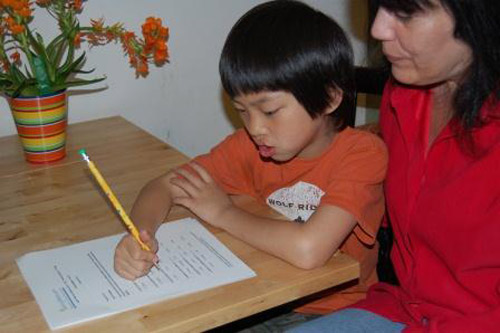
How much of a burden on 4 year-old children is a tutoring program, considering the tutoring, 宿題, and parental involvement?
このような若い年齢での個別指導は両親が行うべきだと私たちは信じています, not with a hired tutor. 例えば, when a 4 year old girl is at the grocery store with her mother, the mother can ask the child to get 4 apples and 2 oranges and then ask, “How many in total did you bring me?” そして “What are apples and oranges?” Or when the father is out with his son and sees a police car, the father can ask the boy, “What is the police car for?” “Why would someone be in a police car?” These are only a few of the real-life examples that parents can easily incorporate within their daily routine to help their child prepare for testing.
Most parents start preparing their children 3 へ 6 months prior to the test date, しかし残念ながら, there are some parents who come to TestingMom.com 1 へ 2 days prior to the child being tested in order to “cram” for the test. We strongly discourage this.
What are the elements of intelligence that this test measures? What does it not measure?
ここにあります 7 abilities the tests measure:
1. 言語 — the child’s ability to tune-in, listen and follow directions.
2. Knowledge and comprehension — basic information that children should know by the time they start school — 色, shapes, 手紙, など.
3. Memory — the child’s ability to remember things he just learned (短期の) or learned in the past (長期的).
4. 数学 — patterning, sequencing, ordering, classifying, 比較.
5. Visual-spatial reasoning — this assesses the ability of the child to reason and solve programs using pictures, 画像, diagrams, geometric shapes, maps and tables.
6. Cognitive skills — this covers thinking, reasoning and problem solving.
7. Fine-motor skills — Popular IQ tests assess the child’s ability to control his/her hands and fingers to do tasks.
These tests do not measure a child’s creativity, emotional intelligence/social ability, artistic talent or athletic ability. また, the tests that are not administered by a trained psychologist don’t evaluate for potential issues such as ADHD, autism, Asberger’s disease, など.
There is an ongoing debate about the accuracy of these tests when given to very young children. Many factors need to be taken into consideration when a child is tested at a young age, such as separation anxiety, unfamiliarity with the tester and testing location, and at what point in their 12 month age bracket they are tested.

What are the negative and positive responses to tutoring 4 year-olds that you have experienced?
The main positive is having children knowing what to expect when going into a testing situation, such as understanding what an analogy is and how to answer a question about it. また, the skills needed for testing are also the skills children need to have to do well in school.
The negative side of preparing a child is that some tutoring companies “practice to the test” with the child, rather than helping the child understand the concepts on the test. また, there are cases when children may do extremely well on the test but not be fully equipped to handle the pace and curriculum of a gifted and talented program.
If anything, what else other than the current admission test could school boards use to assess a 4 year-old’s intelligence?
In the best case scenario there would be a multi-pronged approach to admission for young children. The criteria should include pre-school teacher evaluations, parent evaluations, 検査, and independent evaluation by a teacher or other educational professional. もちろん, with budgetary constraints, getting a holistic view of the child would be too costly.
What has been the growth in the number of customers for your service over the past 3 年?
この〜にわたって 2 years our business has grown significantly, 以上で 500 percent increase in members within the past 12 ヶ月. Because our service is online we are able to reach parents across the U.S. and Canada to give them the resources and expertise they can’t find locally.
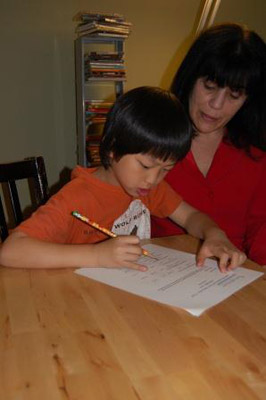
What kind of budget for tutoring are parents going to need to prepare their child for a gifted and talented program (G&T)?
We don’t tutor at TestingMom.com but provide parents an alternative to private tutoring since we want parents to prepare their own children for testing. We have memberships for every parent and every budget, starting at $19.99 for practice questions and online games, へ $3,000 for parents who want one-on-one weekly private phone consultations. Private tutoring for test prep can cost anywhere from $125 へ $350 per hour. ほとんどの場合, parents would need 10 or more sessions from a private tutor to adequately prepare their child for testing. Some tutoring facilities have “cram session camps” where they put the 3 へ 5 year old child in a room and drill the child with questions for up to three hours straight on the concepts of the test. これらの “cram session camps” can cost up to $900. They are popping up in every major city. At TestingMom, we don’t advocate such extreme measures, as the concepts on these tests need to be absorbed by a young child over a period of several weeks or months.
If you don’t have the budget to tutor your child, what are your options in terms of trying to prepare your child for a G&T program?
We feel parents are the best teachers of all and we have provided an affordable alternative to costly tutors. Low price services (など $19.99 at TestingMom.com) help to level the playing field. You don’t have to be in the upper middle class to prepare your child for testing. Parents can also purchase test preparation workbooks from Amazon.com and other educational web sites like CriticalThinking.com.
What percent of your students do you believe would not exceed the scoring bar without your program?
That’s difficult to say because we can’t really measure who wouldn’t have made it. If you look at the averages I’d estimate 55 percent of the students who didn’t prepare do not make the cut. According to a recent survey, a lower percent of TestingMom members indicated their child did not do well on the test.
Each year the competition and the pressure get worse. What is your recommendation to parents who want to do the best for their child?
If a parent knows their child will be tested, I recommend they start practicing as soon as possible. G&T tests aren’t something to prepare for at the last minute and parents should know that even practicing 5 へ 10 minutes a day for several months ahead of the test will make a dramatic impact on their child’s test score.

Photos courtesy of Michael McCurdy and TestingMom.com.
教育のためのグローバル検索で, サー·マイケル·バーバー含め私に参加し、世界的に有名なオピニオンリーダー (英国), DR. マイケル·ブロック (米国), DR. レオンBotstein (米国), DR. リンダダーリング·ハモンド (米国), DR. マダブチャバン (インド), 教授マイケルFullan (カナダ), 教授ハワード·ガードナー (米国), 教授イヴォンヌヘルマン (オランダ), 教授クリスティンHelstad (ノルウェー), ジャンヘンドリクソン (米国), 教授ローズHipkins (ニュージーランド), 教授コーネリアHoogland (カナダ), 夫人. シャンタルカウフマン (ベルギー), DR. エイヤKauppinen (フィンランド), 国務長官タピオKosunen (フィンランド), 教授ドミニクラフォンテーヌ (ベルギー), 教授ヒューローダー (英国), 教授ベン·レビン (カナダ), 教授バリー·98名 (オーストラリア), シヴナダール (インド), 教授R. Natarajan (インド), DR. デニス教皇 (米国), Sridhar Rajagopalan (インド), DR. ダイアンRavitch (米国), サー·ケン·ロビンソン (英国), 教授パシSahlberg (フィンランド), アンドレアス·シュライヒャー (PISA, OECD), DR. アンソニー·セルドン (英国), DR. デビッド·シェーファー (米国), DR. キルスティン没入Areの (ノルウェー), 首相スティーブン·スパーン (米国), イヴTheze (リセ·フランセ·米国), 教授チャールズUngerleider (カナダ), 教授トニーワーグナー (米国), デイヴィッド·ワトソン (英国), 教授ディランウィリアム (英国), DR. マークWormald (英国), 教授テオWubbels (オランダ), 教授マイケル·ヤング (英国), 教授Minxuan張 (中国) 彼らは、すべての国が今日直面している大きな絵教育問題を探るように. 教育コミュニティページのためのグローバル検索
C言語. M. ルービンは彼女が受け取った2つの広く読まれているオンラインシリーズの著者である 2011 アプトン·シンクレア賞, “教育のためのグローバル検索” そして “私たちはどのように読み込みます?” 彼女はまた、3冊のベストセラーの著者である, 含めて 不思議の国のアリスリアル.



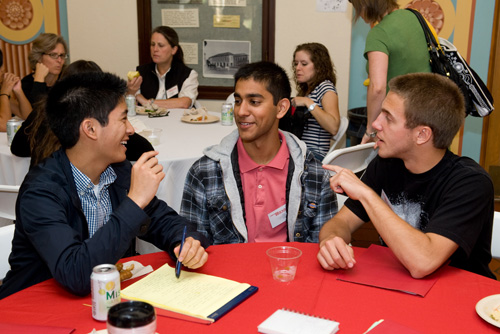

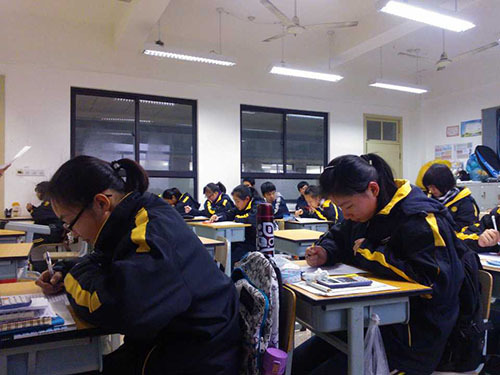
最近のコメント